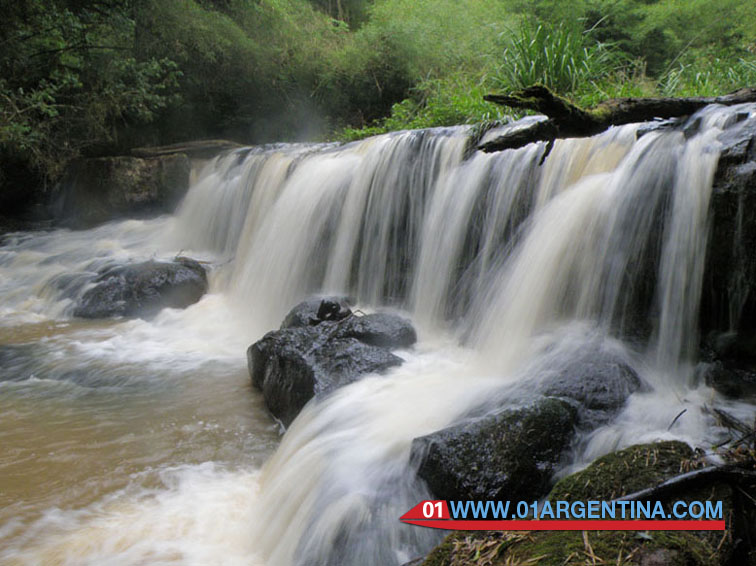
Iguazu falls history
The history and travel information of the Iguazu Falls is really interesting because they falls were discovered in 1541 by Governor Alvar Nunez Cabeza de Vaca.
Nunez was not a conqueror like everyone else. Suffice to say that the book he wrote to tell their stories in this new world is entitled Shipwrecks … When he was awarded the Viceroyalty of the Río de la Plata headed toward him, but sank in southern Brazil and had to come walking through Paraguay , where the Spaniards had fled pursued by the Indians.
In that way, as an adventurous film, he suffered many ups and downs, natural disasters, conflicts and alliances with numerous Indian tribes, which eventually led him through the jungle. That was how, in August 1541 discovered the falls, “which gives the water in the bottom of the earth so great blow that far is heard, and the foam water as it falls so hard, climb atop two Spears and more, “he wrote.
In the Guarani language spoken by the Indians who inhabited and still inhabit the region, Iguazu means “big water”.
This was only the discovery. It was not long before the arrival of the population of the area.
History of Misiones
The Guarani natives, of the Tupi-Guarani family from Amazon arrived in what is now mission territory by the year 1000. In his legendary search for the “land without evil” were settled on the banks of rivers and streams. They moved to small isolated groups that inhabited this territory practically uninhabited and did the same with major groups such as Guayaquíes and Kaingang.
The Guarani were warriors, hunters and gatherers. They called themselves “Ava” which means “man”. But also they had great artistic skills and an agricultural tradition. They shared the same language and afianzaban their communities through ties of kinship. On arrival of the Spanish, the Guarani occupied much of the River Plate Basin, a vast territory defined by the Parana, Paraguay and Uruguay rivers with their tributaries.
The Spanish conquistadors began exploring the Cuenca del Plata after the founding of Buenos Aires (1536) and Assumption (1537). One of them, Alvar Nunez Cabeza de Vaca, left the Brazilian coast to the city of Asuncion, made contact with many Guarani groups and found the wonder of Iguazu Falls (1542).
The province of Misiones has a name reminiscent of the Jesuit towns, but his story is based on the roots of indigenous America.
In early times, the relationship between Spanish and Guarani were relatively cordial, but the ambitions of Spaniards led to abuse and domination through what “entrustment” was called. This system created by the Spanish crown and indigenous lands granted to Spaniards who became masters of their lives “entrusted”.
The arrival of the Jesuits cause various conflicts. The parents of the Society of Jesus, founded by Ignatius of Loyola in 1539, settled in a geographic area of political tension between two colonial empires of the time: Spain and Portugal. The more than 200 years in the region of the Guarani were marked by pressures and attacks from both sides. The footprint would print those years forever a strong identity in the region. The missions formed a unique experience in this part of America and left many testimonies that are manifested in the ruins of their villages and remain in values, myths and legends.
After the expulsion of the Jesuits by King Carlos III in 1767, with the creation of the Viceroyalty of the Río de la Plata governorates and municipalities they were formed, and the region became dependent on Asuncion.
The May Revolution of 1810 boosted the fighting on the territory of Misiones, Paraguayans, Portuguese and independence were played. Andresito, adoptive son of Artigas, who was appointed governor by his father, along with his forces prevented the incorporation of Misiones Guarani and Portuguese possession.
Years later, South Missions was occupied by Paraguayan and Brazilian Corrientes. After the Paraguayan War (1865-1870) were defined the limits of the province.
In 1881, Misiones was declared governor Homeland and established the capital in Corpus, first, and definitely in Posadas.
In the late nineteenth century the various European immigration wave began. The arrival of immigration began in the South, in the area of Apostles, where Polish and Ukrainian contingents occupied the farms allocated to agricultural colonies. Later, in the Alto Parana, the colonial companies bought land and sold them, especially German and Swiss European settlers, to form the people of Montecarlo, Puerto Rico and Eldorado. But one of the most interesting phenomena occurred in the downtown area, in Oberá, where colonization was spontaneous, with the arrival of Scandinavian, Italian, French, Russian, Polish, Swiss and Spanish, who along with Paraguayan and Brazilian shaped a multiethnic community. Later, this area of Misiones and other Asian immigrants to receive: Arabic, Turkish and Japanese.









